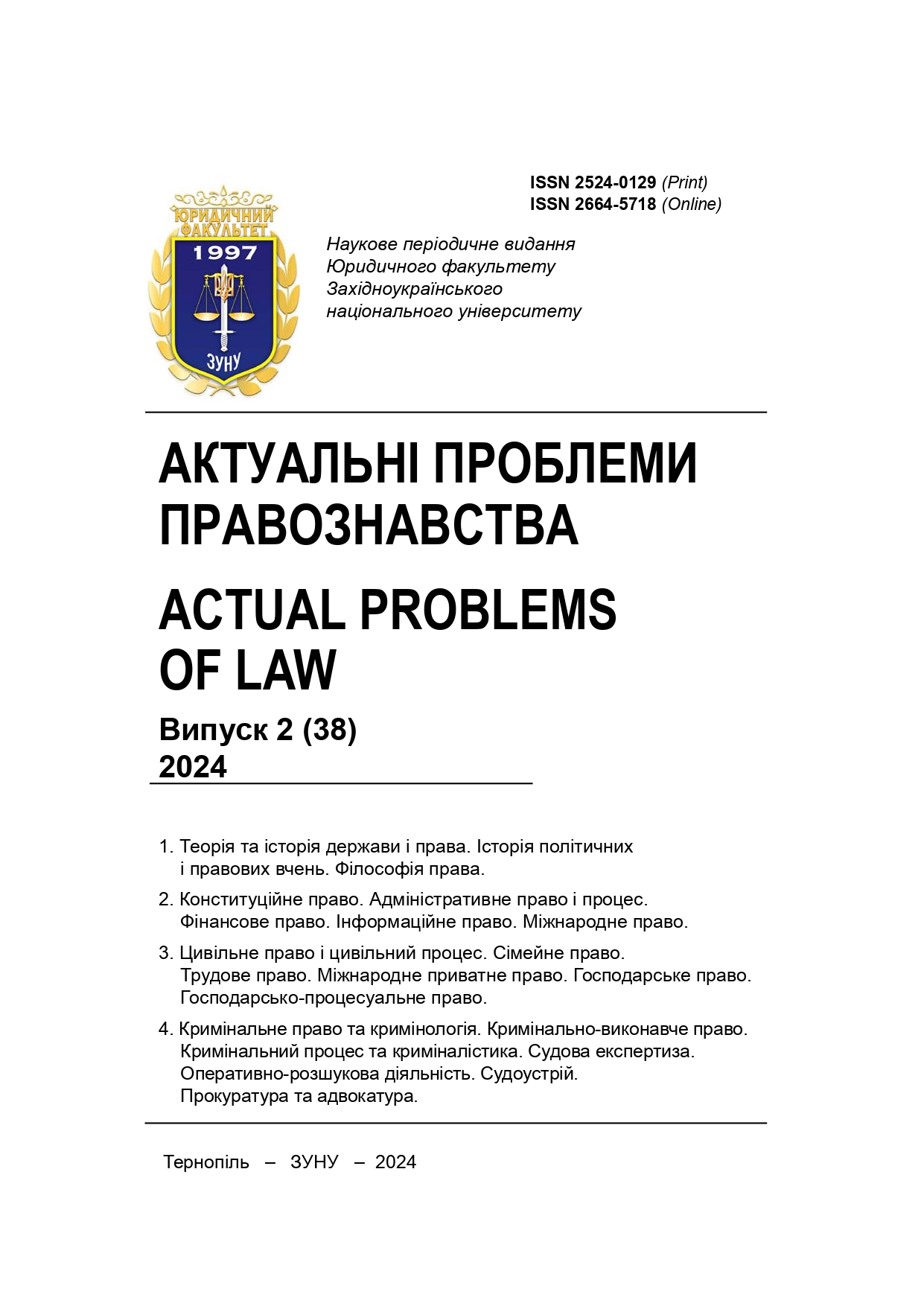Differentiation of the legal status of parliament in the context of variability of state structure
DOI:
https://doi.org/10.35774/app2024.02.059Keywords:
legislative power, Verkhovna Rada, representative democracy, balance of power, parliamentarism, form of governmentAbstract
In the modern world, where the diversity of forms of government is an integral characteristic of the global political landscape, the issue of the legal status of parliament acquires particular relevance and significance. Parliament, as a key institution of legislative power, plays a crucial role in shaping and implementing state policy, ensuring democratic principles, and protecting citizens' rights. However, the specifics of its functioning and legal status can vary significantly depending on the form of government.
This scientific publication is devoted to a comprehensive analysis of the peculiarities of the legal status of parliament in the context of different forms of government. The paper examines unitary, federal, and confederative states, as well as specific forms of government, such as autonomies and associated states. Particular attention is paid to comparing the powers, structure, and mechanisms of interaction between parliaments and other branches of government within different state systems.
The relevance of the study is determined by the need for a deeper understanding of the impact of the form of government on the effectiveness of the legislative body, its ability to represent the interests of citizens, and ensure a balance of power in the state. Moreover, in the context of globalization and the growing interdependence of states, the study of different models of parliamentarism becomes important for improving existing systems of public administration and finding optimal forms of organization of legislative power.
The scientific study will analyze a wide range of scientific sources, legal acts, and practical examples from different countries around the world. This will allow identifying general trends and unique features of the legal status of parliaments in states with different structures, as well as assessing their impact on the effectiveness of the legislative process and the quality of democratic governance as a whole.
References
Lijphart, A. (2012). Patterns of Democracy: Government Forms and Performance in Thirty-Six Countries. 2nd ed. New Haven: Yale University Press [in English]
Sartori, G. (1997). Comparative Constitutional Engineering: An Inquiry into Structures, Incentives and Outcomes. 2nd ed. New York: New York University Press [in English]
Elgie, R. (2004). Semi-Presidentialism: Concepts, Consequences and Contesting Explanations. Political Studies Review, 2 (3), 314-330 [in English]
Norris, P. (2008). Driving Democracy: Do Power-Sharing Institutions Work? Cambridge: Cambridge University Press [in English]
Stepan, A. (1999). Federalism and Democracy: Beyond the U.S. Model. Journal of Democracy, 10 (4), 19-34 [in English]
Shugart, M. S. and Carey, J. M. (1992). Presidents and Assemblies: Constitutional Design and Electoral Dynamics. Cambridge: Cambridge University Press [in English]
Watts, R. L. (2008). Comparing Federal Systems. 3rd ed. Montreal & Kingston: McGill-Queen's University Press [in English]





